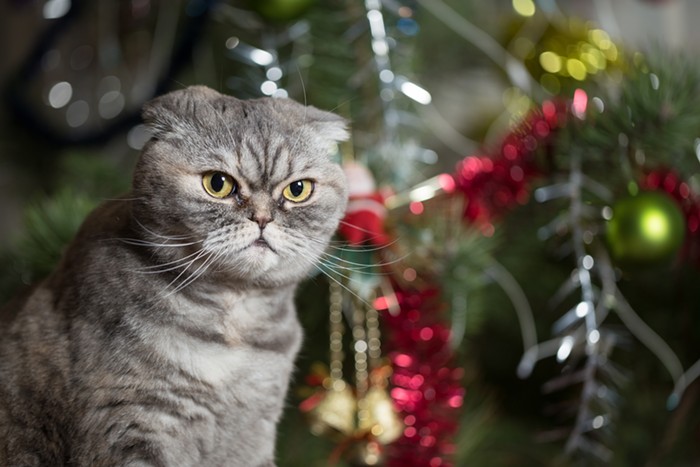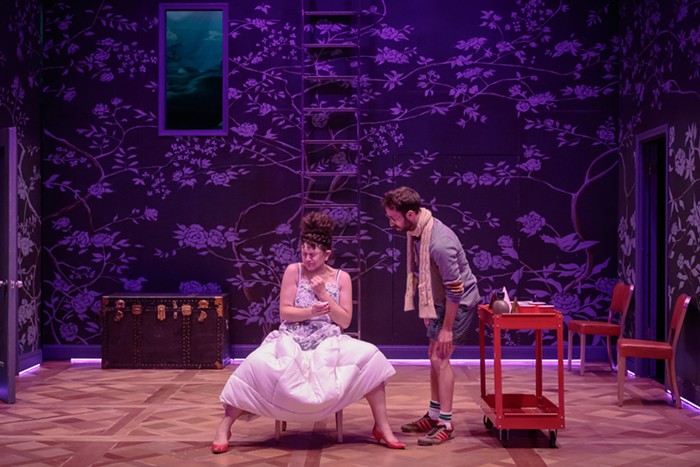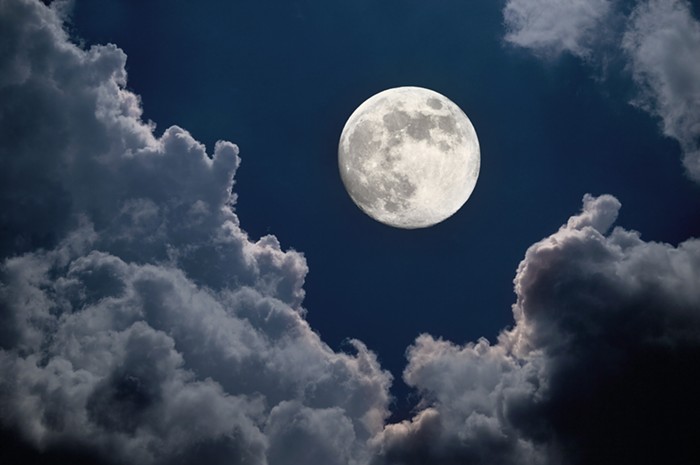
- /AMYSEDARISROCKS
A week or so ago I got the chance to talk to author/actress/comedian Amy Sedaris about her new book, Simple Times: Crafts for Poor People (my review of it is in this week's paper). I was really excited to be able to talk through her process with Paul Dinello (who wrote and acted with Sedaris for Strangers with Candy and currently writes for The Colbert Report). Sedaris' brand of comedy has always seemed uncalculated to me, like she just funnels her weird personality into whatever project she's working on and lets the results be what they may. Understanding the development of a book like Simple Times felt really important in understanding how to receive its weird mix of tongue-in-cheek unhelpfulness and sincere passion for crafting.
I missed our first interview due to time difference mix-up (read. due to me being stupid) but that ended up being unexpectedly serendipitous due to a bunch of interviews being published later that week where she fielded almost all of my original questions (my favorite interview is here at the AV Club). That meant I got to nix broad questions about crafting in general (which she has repeatedly said she is sick of anyway) and instead talk about Sedaris' constant fight to preserve imperfection, Jane Pittman's style sense and why shitty instructions help keep the book honest.
Amy Sedaris will be in Portland tonight at the Bagdad Theater talking, answering questions and just being her charming self. Show starts at 7:00 pm. Buy your tickets here.
Can you talk about your writing process with Paul Dinello? In other interviews you've said that you had a tendency to want to take things in a more straight-forward direction and he would push you towards the funnier end.
Right, he always does that. I give him my thing like, “No Paul, this is serious!” and then the humor just comes from him making fun of me trying to take something so seriously. Because I'm the first one to make fun of anything but there are certain things that I'm serious about - especially the rabbit chapter [in her previous book, I Like You] or something — and he's just rolling his eyes, making fun of me, like “Who cares?”
But you know, the thing about these books is I'm in charge. I get to be the executive producer, and when I'm in charge people have to do things the way I want them to do it. So I have a good time when I go to Paul and I say, “This is what this is. This is what this chapter's going to be.” Then we'll throw around some ideas or we'll be sitting in the same room and he might write something based on the list of things that I gave him or he's writing while I'm talking and yelling at him and he'll just get it off his chest first, what he thinks would be funny. Then we'll go with that or we'll add to it or subtract to it and we just start rewriting and rewriting it. And there are other things like the “Making Love” chapter that he completely wrote on his own. I contributed, like, a couple of words because with this book so much of the writing and production of the book happened at the same time so I didn't really have that luxury of really thinking about what I wanted to say about “Nature Crafts” or whatever. He was really helpful about that; he'd spearhead a chapter while I was taking care of what the crafts were in that section or how I was going to shoot that or what the costume was going to be.
So it was different than I Like You because everything was happening at once. Like, with “Making Love” I knew what I wanted it to look like, like I wanted the brown paper and those canary yellow robes and I knew what crafts to get and he just took it from there.
Where does the impetus for a chapter like that come from? Do you start with a look or a photo idea and then the writing comes out of that?
Well, with this particular book there were things I just wanted to get off my chest. There's a book I have called Making Love or Lovemaking or something from the '70s and I remember giving a copy of it to Will Ferrell and saying, “I really want to redo this book with you.” The bodies are, like, the way bodies looked in the '70s, where now if that book were done it would be really cut, muscular people. It's just, like, the ugliest people in the world, naked, touching themselves. It really made me laugh. At the back of my head I always wanted to do something like that and I always wanted to see a short robe on a guy for a costume and I wanted to come up with a series of crafts for the bedroom. So I had all of that and then I thought this was a great opportunity because you can think of anything and say, “What's a good craft for that?”
Like, I've always wanted a Jane Pittman costume. I love that movie The Autobiography of Jane Pittman because I loved her clothes and I loved the sound in that movie. It's really loud, it's really funny. So that's the first costume I asked my costume friend to make and that was just a dream come true.
And I love the “Outer Space” chapter! I had just worked with Neil Patrick Harris and he had explained to me about magic tricks so that's what inspired that chapter.
Talking about the pictures, you really capture that kinda charming, kinda gross feeling to all those old crafty and cooking books have but I can't figure out what it is about them that gives them that quality. Like, is it the arrangement? Is it the lighting?
I think it's the color, too, like the goldenrods and the avocados. Or maybe just that everything looks very real, where if you see some craft books it's so Photoshopped and so perfect that you're intimidated.
Maybe that's it, almost like the '70s bodies in that book. You can see all the imperfections.
I'm always fighting for that. Even when I do a photo shoot I try to bring everything and I say, “I really want to see the scars; I want to see the stitching on the fabric; I want to see the lines under the face.” Nowadays they just gloss all over that and you're like, “Why did I bust my ass to do this when you're just going to fix it in post?” So we tried to have everything be exactly the way we wanted it so when we shot it that was the deal. If the glue was popping off or something was missing then that's great, it's more realistic.
And that's more than just a sight gag. You don't really see that anymore in any kind of commercial photography.
In anything! I don't know why! That's the kind of stuff I like, even in crafts. I like naïve crafts, like you can tell it's very real, like there's a story behind it or it was made out of necessity. And when someone protects you from that it's like what's the point? I wanted the book to be the craft itself and for it to look real we knew we had to keep that.
One of the books you used as a reference was a book for mentally retarded people, right? Isn't that where the marshmallow stars came from?
Yes, that's one of my favorite crafts. I was on a plane reading that book and my eyebrow was knitted and I caught myself — here I was reading this book and I was so confused that I was trying to understand the instructions like, “My God, this is so hard!” I love that book because I just love how they write about that and how this craft will be challenging for this person. I enjoy books like that.
That's funny because the instructions in this book are so minimal. In I Like You you straddled the line between actual instruction book and straight-up comedy book. In Simple Times all the instructions are just, like, “Figure it out.”
“Eyeball it!” [laughs] Cuz that's kind of what crafting is. I wanted the whole book to trigger ideas. Like, do I really have to explain it to you? I don't know how to knit. Find someone to make some [knit] sausages; that's what I did! It was important for me to keep the book honest because I Like You was more personal and pretty honest and this book, though it was going to be funnier. Most craft books are broken down into, like, “Mosaics” or something but I don't know how to do any of that stuff! How am I supposed to be honest and have anything to say about anything? So it took me a whole year to figure out how I was going to lay the book out into chapters like “Handicraftable: How to craft with your disability.”
So keeping the instructions simple was a way of keeping it honest?
Yes, because then that allowed the chapters and some of Paul's writing to be funnier. Trying to explain anything is very difficult. And usually that's how I do it; if I see a picture in a book then I just want to figure out how to do it.
You like something that sparks your imagination and then you figure out the rest.
Yes and that's what I wanted for this book. Just look at it, it'll remind you of something and make you want to do something. Hopefully. I researched some craft books at the bookstore and I was bored out of my mind. They're so boring! And then there'd be, like, one photograph and you're like, “Whaaat?” All the writing and going on and on... I couldn't even steal from them!
Do you think step-by-step instructions sort of kill the imagination part of the craft?
It does for me. I mean, the old books I was inspired by but once you got to reading them they were Snoozeville. They're just not entertaining. At all.
A big difference between this book and I Like You is that that book really focused on your social side. Simple Times is a lot more hermetic, like, being alone in a room with glue and cotton balls.
[Laughs] Yay! Well, for I Like You I never left the apartment visually, which was kind of fun. For this book it was kind of the same thing but I just wanted to give that idea of the kind of people who craft, which is why I did all the costumes. It's almost like a book full of local artists.
Yeah, it's got this kind of lonely, sad undercurrent to it.
[Laughs] It does, doesn't it? Like it's been tainted somehow. Poor people get punished all the time and, like, we just rape you of that. You take the medallion off the stuffed animal before you give it away. You're punished! You're poor!
What's the response been like in the craft community to the book?
So far it's been OK. Crafters have embraced me, they've always been very nice and open with me. Maybe that's because I talk so much about crafting and not many people do, I think. But real, real crafters, the serious ones who break down the cost of their materials and figure out how much they're going to sell things for, I don't know about those kind of people. I don't know if they've embraced me or who they are. They probably think it's a waste of time but that's OK.
The book is so clearly making fun from the inside. It's such a labor of love.
It is, I tell ya. It's a lot of work! And I'm lucky because the book company gave me so much freedom, which is really great. But to have it take over your home? That's a lot.
Yeah, working out of your apartment seems like it could be really claustrophobic.
It was and that's why I got tired of crafts. They were everywhere! Everything was a supply; you couldn't throw it out because you might need it! It was a lot. But how often do projects like that come around? It's all creative. Every ounce of it is creativity.
Are you ready for another book to take over your home and life?
I don't know. The minute I turned the book in I opened a new file that said “New book ideas!” and I love the pressure of not having to do it so I'm really open to everything. Everything is a new idea. You know how you get inspired by every single thing. But it'll be a while. It sort of takes you out of circulation because you can't do other things. All your time has to go to the book and I'm just ready to do something else. When it's time I'll go back into book-mode, maybe. I just have to find new people to manipulate.
That's the key!
You get a hot lunch! Hel-lo!
How much of your voice in this book is a caricature version of yourself and how much of it is straight-up Amy Sedaris?
I think I Like You was more me. I think with this one, because Paul spearheaded the writing... you know, he uses bigger words. [laughs] He organizes my chaos. For some of the chapters I didn't even have an angle yet, I was so busy. I'd be like, “I'm shooting the pictures! This is what we have! This is what I want to say!” and he'd figure out what I was trying to say and put it in my words. So it's a little heavy on the Paul side, I would say. But all the crafts and the descriptions and everything else is pretty much in my voice.
Well, reading it I was wondering if you have any desire to write a sort of straight book in your voice? Something like Steve Martin's Born Standing Up or something?
Oh, I love that book.
Something beyond just being funny?
I don't know... I don't know. I think I'd get bored. I want to have fun and enjoy it; get the costumes on and laugh our asses off. That's what I do it for, the process like that. I think if I sat down and I was like, [in a pompous voice] “When I was thirteen...” You know, who cares? I don't think I've done enough.
When you're throwing on the costumes and entertaining each other do you ever worry about other people finding it as funny?
I guess I don't really think like that. It's not going to go on the page if you're not laughing, you know. To me, all I want to do when I'm creating something like that is make sure I'm laughing. And it's not that it doesn't /matter/ if other people think it's funny but if I'm laughing and the people in the room are laughing then it's good enough to have in the moment.
I bring it up because I don't sense that worry in your writing. It seems like, “We're having fun and I hope you like it.”
That's exactly what it is. Maybe that's why people forgive me a lot. I tend to get away with a lot of things but I don't know why. I've been told that my whole life. “Only you would get away with saying that, Amy” or “You could say that but I could never say that.”
Like what?
Just anything! It might across as racist or something but people know me. I'm misunderstood in a lot of ways but I tend to get away with a lot.
















